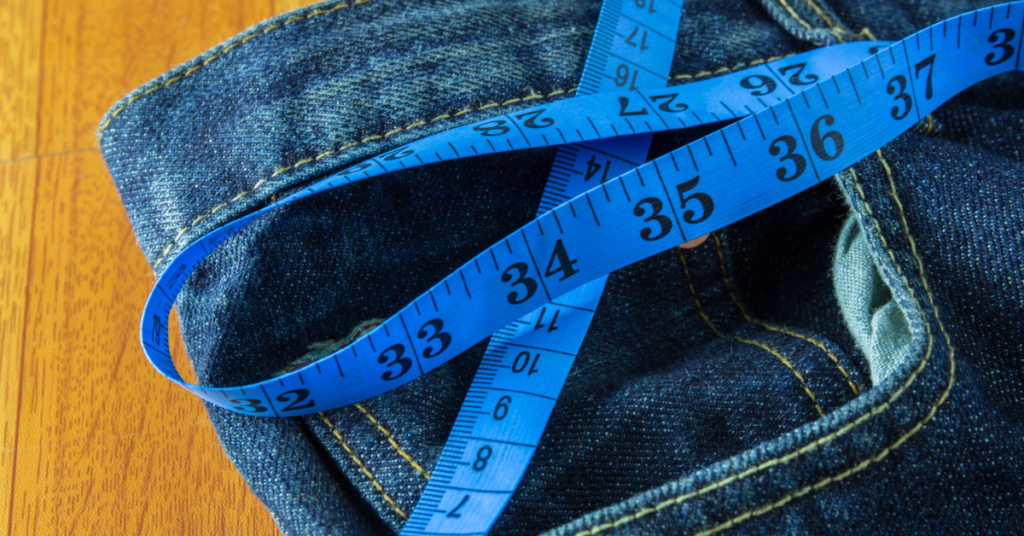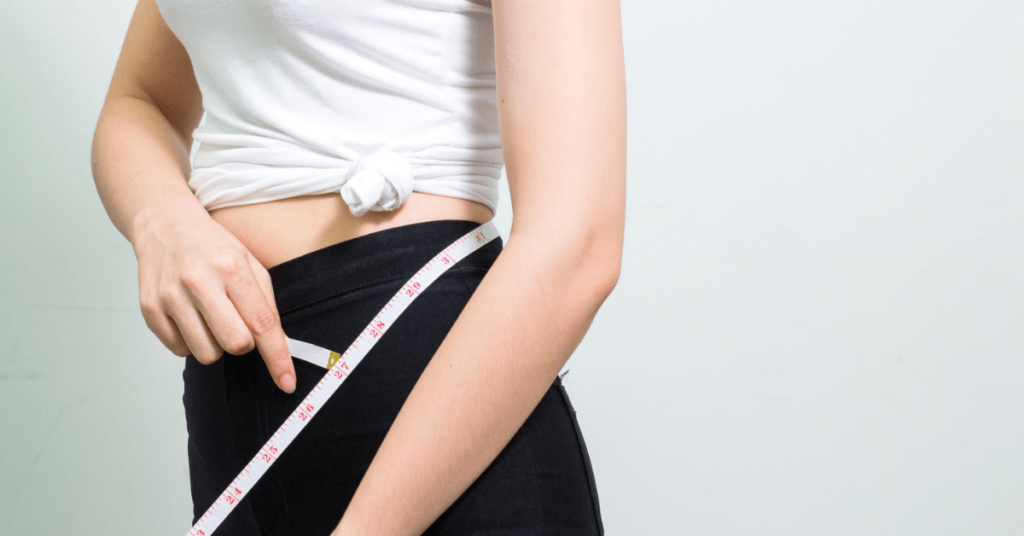Finding the perfect pair of jeans is a long, arduous process. Here is The Step-By-Step Guide To Finding Your Jeans Size. But when has anything ever been simple? It’s always more challenging than it seems to navigate the world of jean sizing, especially if you have a body type that’s outside of the usual slim/straight categorizations. So where do you begin?
The Step-By-Step Guide
If you’re lucky enough to own a pair of jeans that fits you perfectly, you can use its measurements as a guide for other brands.
Here’s how:
1. To measure the waist of your jeans, lay them flat on a hard surface and use your measuring tape to measure across the top of the waistband. Don’t pull the tape tight, just snug it. Make sure that the fly of the jeans is zipped but not buttoned and that the button is not sagging below the back part of the waistband. Double this number to get your jeans’ waist measurement. (This measurement varies depending on how high or low you like to wear in your back pocket.)
2. To measure the inseam, start at the crotch seam and measure down to the ankle hem.
3. To determine the width of your thigh, measure two inches below the crotch seam and then double this number.
4. You need to measure the rise of your jeans. Pull them tight when you take this measurement to get an accurate number. Low-rise jeans generally measure seven or eight inches from the crotch to the waist, mid-rise is eight or nine inches, and high-rise is nine or 10 inches.
1. Identify Your Body’s Best Rise

Once you have your measurements, you’ll want to choose the rise that is right for you. There are three types:
Low-rise jeans sit just below or sometimes even slightly above the belly button.
Mid-rise styles usually fit right below the waist and are common in all pant styles.
High Rise: sits above the navel.
To figure out your preferred rise, measure the inseam of a pair of jeans that fits you well. Once you have this information, you can decide which rise is right for you. If you prefer a lower rise, consider how the jeans will look with different types of shoes and shirts. You might also want to take into account if there are any office dress codes or if you plan on wearing these jeans out in public at all—as some people may not appreciate seeing your underwear.
If you wear super-low rise jeans and bend over in front of colleagues, your butt will be on display. Choose a pair with a higher waistline to avoid this scenario.
2. Check Your Waistline

It’s important to know which style of jeans you’re shopping for in order to get the right measurements. For mid-rise jeans, measure around your natural waist, and for low-rise jeans, take your measurement two or three inches below that.
To get the most accurate measurements, it’s best to measure over a shirt that isn’t too tight or baggy. It’s also a good idea to measure yourself without any undergarments on and to avoid pulling the measuring tape tightly around your waist; that way you can be confident that your jeans will fit comfortably.
3. Keep track of your inseam

The last area of your body to measure is your inseam. It’s the distance between your crotch and your ankle, and it can be tricky to get a true reading of this measurement. Many popular denim brands, including The Gap and Levi’s, offer jeans in standard waist sizes with varying length options (short, regular, and tall).
4. Check the Brand’s Size Chart here
If you’re trying on jeans in-store or online, it can be helpful to check if the brand or retailer has its own size chart. Some use sizing systems that are based on inches (e.g., 29, 30, 31) while others use numbers (e.g., 8, 10, 12). Furthermore, European brands typically require you to estimate how their sizes compare to your most typical U.S.-brand fit – and this varies a bit depending on the country: In France and Italy, for example, European brands tend to run smaller than in the U.K.. On top of all this, some denim designers are known for vanity sizing which means you’ll take a smaller size in their jeans than usual; others are known for overselling so you’ll need to go up a size with them.
Conclusion:-
Hopefully, this step-by-step guide to finding your jeans size will have answered any questions you may have had about finding the right dress size for yourself. It’s worth noting that certain factors can affect your size (such as weight fluctuations, new brands, and changing body types), so it’s not uncommon to have to try on numerous clothing pieces before finding ones that fit. But now you’ll know what you’re looking for.





